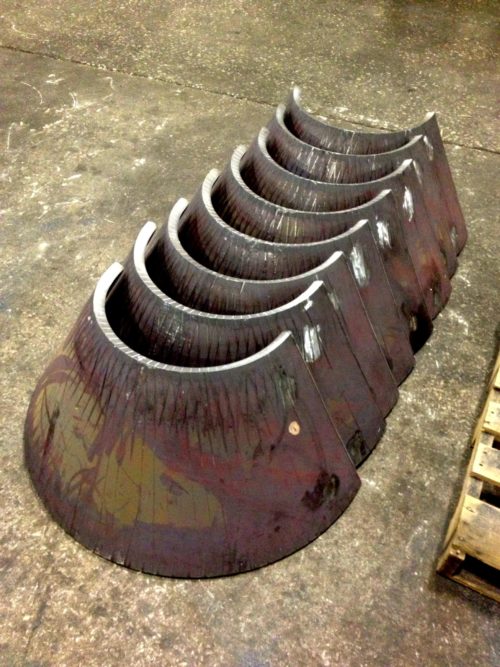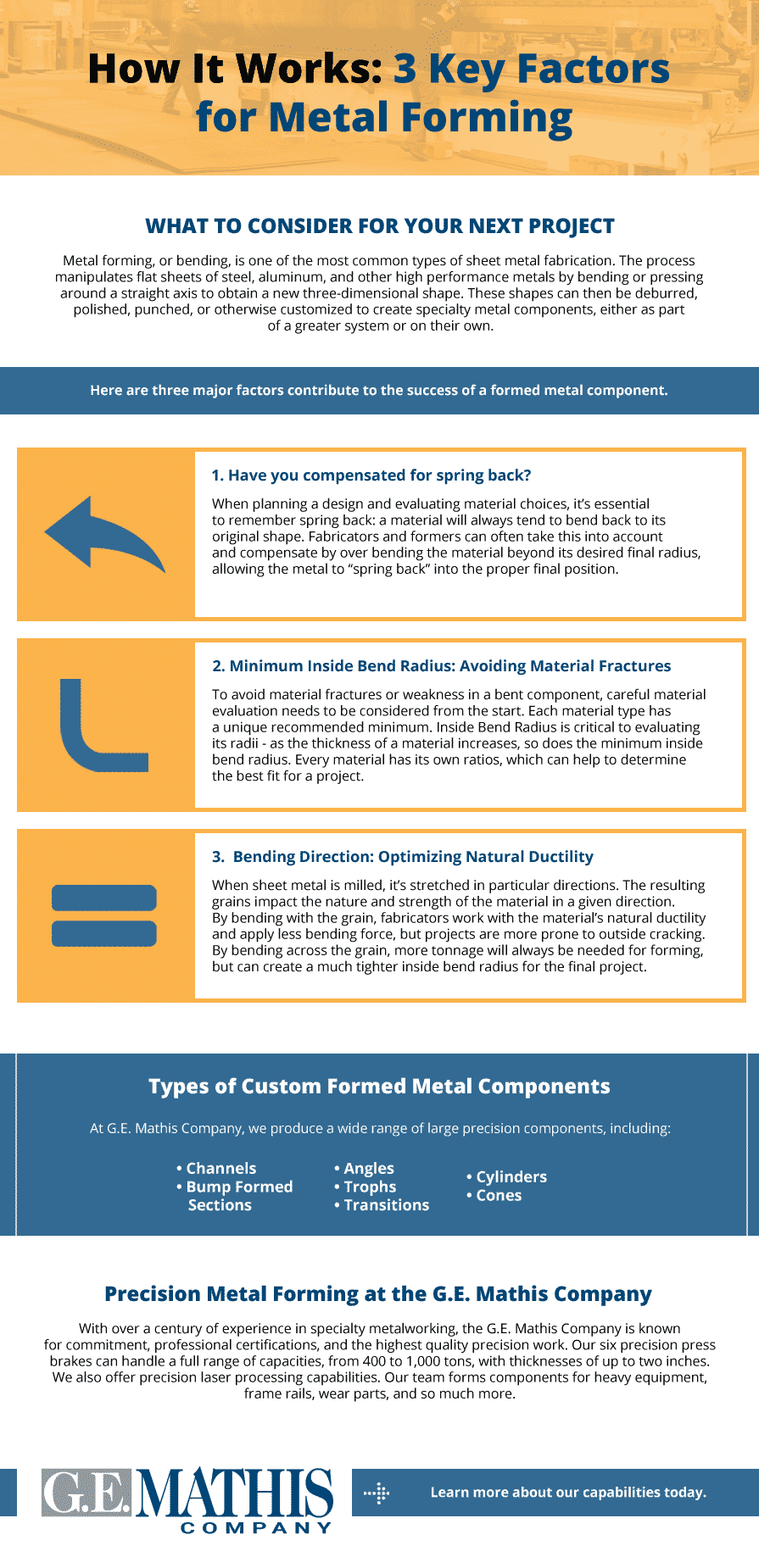What to Consider for Your Next Project
Metal forming, or bending, is one of the most common types of metal fabrication. The process manipulates flat sheets of steel, aluminum, and other high performance metals by bending or pressing around a straight axis to obtain a new three-dimensional shape. These shapes can then be deburred, polished, or otherwise customized to create specialty metal components, either as part of a greater system or on their own.
Here are three major factors contribute to the success of a formed metal component.
1. Have you compensated for spring back?
When planning a design and evaluating material choices, it’s essential to remember spring back: a material will always tend to bend back to its original shape. Fabricators can often take this into account and compensate by over bending the material beyond its desired final radius, allowing the metal to “spring back” into the proper final position.
2. Minimum Inside Bend Radius: Avoiding Material Fractures
To avoid material fractures or weakness in a bent component, careful material evaluation needs to be considered from the start. Each material type has a unique recommended minimum. Inside Bend Radius is critical to evaluating its radii — as the thickness of a material increases, so does the minimum inside bend radius. Every material has its own ratios, which can help to determine the best fit for a project.
3. Bending Direction: Optimizing Natural Ductility
When sheet metal is milled, it’s stretched in particular directions. The resulting grains impact the nature and strength of the material in a given direction, so be sure to note whether a sheet is being formed with (longitudinally) or across the grain.
By bending with the grain, fabricators work with the material’s natural ductility and apply less bending force, but projects are more prone to outside cracking. By bending across the grain, more tonnage will always be needed for forming, but can create a much tighter inside bend radius for the final project.
Types of Custom Formed Metal Components
Metal forming specialists craft the critical components needed to support almost every industry — aerospace, military, automotive, medical, food service, manufacturing, communications — the list goes on and on. At G.E. Mathis Company, we produce a wide range of large precision components, including:
- Channels
- Angles
- Formed Pan sections
- Transition segments
- Bump Formed Sections
- Cones
Precision Metal Forming at the G.E. Mathis Company
With over a century of experience in specialty metalworking, the G.E. Mathis Company is known for commitment, professional certifications, and the highest quality precision work. Our eight precision press brakes can handle a full range of capacities, from 400 to 1,000 tons, with thicknesses of up to two inches. We offer metal fabrication beyond bending and forming, too — precision laser processing, plasma cutting, and welding are a few of our capabilities.
Our team forms components for heavy equipment, frame rails, wear parts, and so much more. Contact us to discuss your next project with one of our metal forming professionals or learn more about our capabilities today.















